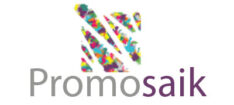I like Michael Rosen’s work for children (I use The Sad Book in my children’s literature course at the university) and I’m always interested in what he has to say about language and lit. So I was excited to read his book, Alphabetical.
What a fun, interesting book! You can dip in and out and you can return to it, as there’s so much to learn from it. Sometimes it’s a bit random, as though you’re getting access to what’s going on in Rosen’s brain at any given moment. As he writes about the alphabet, topics range over the Rosetta Stone, nonsense, jokes, umlauts (he jokes about “adlauts”: umlauts used unnecessarily, especially in company names), fonts, and much more.
Here’s a typical example of how he gives history about each letter: “‘A’ starts its life in around 1800 BCE. Turn our modern ‘A’ upside down and you can see something of its original shape. Can you see an ox’s head with its horns sticking up in the air? If so, you can see the remains of this letter’s original name, ‘ox’, or ‘aleph’ on the ancient Semitic languages. By the time the Phoenicians are using it in around 1000 BCE it is lying on its side and looks more like a ‘K’. Speed-writing seems to have taken the diagonals through the upright, making it more like a horizontal form of our modern ‘A’ with the point on the left-hand side.” (p. 2)
But often the chapters go beyond the letter themselves. For example, K is for Korean and Rosen discusses the singer of the popular song ‘Gangnam Style’ as a way into looking at the Korean tongue. Korean is the “earliest known successful example of a sudden, conscious, total transformation of a country’s writing.” (p. 163) In 1446, the king of Korea created a new alphabet (rather than using Chinese characters) because he was “saddened” that the people of his country couldn’t make themselves understood in writing. Rosen notes “I cannot think of anything in the world of alphabets more humane than that.” (p. 164)
Of course I was particularly interested in references to anything Scandinavian. Rosen mentions how a runestone from 1362 was found in the US in 1898, which seemed to prove that the Vikings had been in America. (p. 337) And he gives a list of some English words from Old Norse, which entered the English language when the Vikings came: “Anger, bag, bask, birth…rotten, rugged, run, skid…window, wing, wrong.” (p. 341)
Basically, this is a book can you return to many times. There’s so much information in it and it’s all fascinating.

